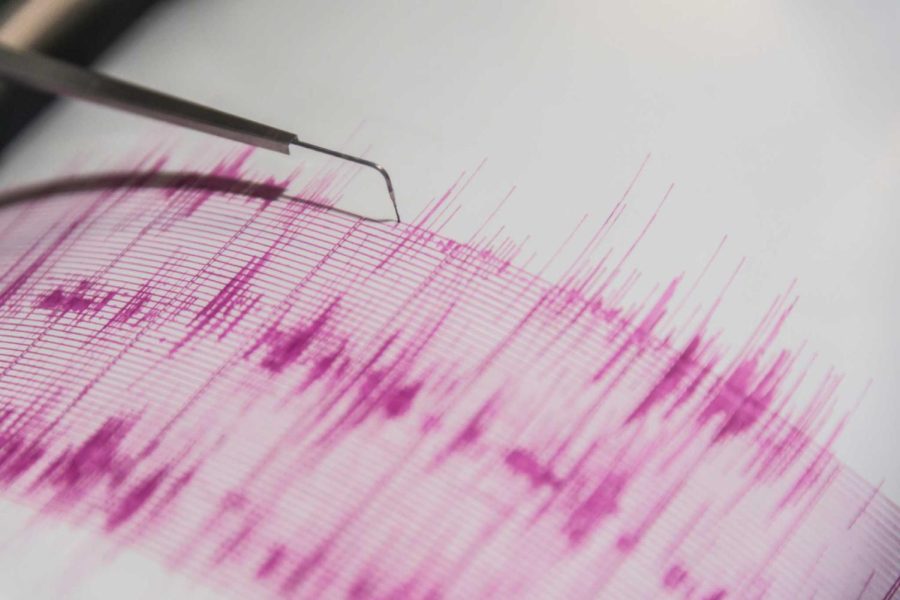Drop, Cover, and Hold On: What To Know about Earthquakes in the Bay Area
October 13, 2021
Seismology experts provide the science behind the prevalence of earthquakes in the Bay Area
Over 2,000 earthquakes occur every year in the Bay Area. There are seven faults including the Hayward and San Andreas fault lines, known for their common quakes in the region.
Oakland has had two consecutive earthquakes of 3.0 and 3.5 magnitudes last week on Oct. 1-2. While the occurrence of earthquakes has not shown any significant changes over time, the effects of climate change have not had a recognizable effect on when earthquakes transpire.
California’s commonly held fear is that the state will go underwater caused by a quake from the San Andreas fault is not likely. According to NASA, it’s a common myth that certain weather conditions cause earthquakes. However, there are secondary hazards that can ignite fires, explode water pipelines, and rupture roads.
“Increasing temperatures and climate extremes in the atmosphere don’t have a strong effect on the much greater tectonic forces at the depths where earthquakes occur. But many secondary hazards of earthquakes can be exacerbated by our changing climate, including the more rapid spread of fires that would be ignited after a major earthquake,” said USGS research geologist Austin Elliott.
In the East Bay, most of the earthquakes occur along the Hayward and Calaveras fault lines. It is important to know that the aftershocks and quakes tend to be felt strongest near the epicenter which is located on a fault.
There are links for the USGS interactive fault map here as well as CGS interactive hazard map here to get more information on where our active faults are located. “The USGS and California Geological Survey have resources on the web where you can map out the location of active faults near you and look at other geologic hazard zones that may impact your community,” continued Elliott.
The timing of future earthquakes cannot be predicted. “While we can’t predict earthquakes, what we can do is alert people when an earthquake does happen (Earthquake Early Warning) and try to prepare as much as possible,” said Christina Valen, Data Analyst at the University of California, Berkeley’s Seismology Lab.
The key factor is knowing what causes an earthquake. “Earthquakes occur when a sudden slip on a fault results in a release of energy and ground shaking. The impact will depend on multiple factors. The risk of liquefaction, where soil strength is greatly reduced during earthquake shaking, is one earthquake hazard that varies greatly based on area geology,” continued Valen.
There is a protocol for earthquake safety: drop, cover, and hold on when you start to feel shaking. This helps prevent common injuries when earthquakes occur such as objects falling down, tripping or falling from unsturdy grounds, broken bones, and cuts.
Elliott advised to strap TVs, bolt cabinets and shelves, use putty to hold down fragile objects, strap water heaters, and brace your foundation. There are more resources to help you prepare for an earthquake from Earthquake Country Alliance.
Preparing for an earthquake before it happens is important, “People should make a kit in case of emergencies that includes enough drinking water and non-perishable food for several days. Heavy objects like fridges and bookshelves should be secured to wall studs to prevent falling during an earthquake. If no shelter is available, remain crouched and cover your neck with both hands” stated Valen.
Finding earthquake preparedness information classes will provide protection in the case it happens. “Participating in the Great ShakeOut on Oct. 21 can get people thinking about what they would do in case of a major earthquake here,” said Valen.
“Earthquakes are inevitable. If you’re prepared, we can ride through them just fine. The choices we make as individuals and society dictate whether an earthquake will become a disaster,” remarked Elliot.
An earthquake can happen at any moment. It’s important to know about earthquakes and what to do in the case it happens. Earthquakes like other natural disasters are inevitable. The best way to mitigate preparedness is to plan before disaster strikes.







